Carrigan says that Knapton was known by the Irish speakers of Kilkenny as ‘Clooinăvomm’ (History and Antiquities of the Diocese of Ossory II 386). The forms ‘Clone John’, ‘Cloghne John’, ‘Clonejohne’ are also found in other 16th century documents. It is not clear what the origin of this placename is, but it must have the appearance of ‘Cluain a’ Mhaim, the Mother’s lawn ’.

With the dissolution of the monasteries during the reign of Henry VIII, church land became the property of the English crown and the land of Abbeyleix was confiscated and granted in 1562 to Thomas Butler, Earl of Ormond, in recognition of his service. However he died without male issue and so by 1637 the manor was again safely in the hands of the Crown. It may be that Knapton was at that stage part of the Ormond estate.
In 1633 Dr Purcell, abbot of Abbeyleix became embroiled in a scandal which was reported to the Vatican. It was alleged that he had ‘abducted and deprived of her virginity’ one Miss Mary Fitzpatrick, daughter of the Baron of Upper Ossory. As the Fitzpatricks were based at Watercastle, very close to the site of Abbeyleix, it seems that the Cistercians’ connection with the locality had not wholly been severed. Purcell was acquitted, with the suggestion that the story had been fabricated to blackmail him.
Knapton is not listed on the Down Survey or in the Books of Survey and Distribution
The surrounding 20 townlands were all defined as Crown Lands in 1641, and had been acquired by Sir William Temple by 1670 – all with the exception of Knapton alone which is listed as 1641 Owner: Land, Unforfeited (Protestant) 1670 Owner: Land, Unforfeited (Protestant)
There is no reference to Clonoyvam or Knapton in the Fiants of Elizabeth I, and no castle is marked on Petty’s map. The probability is that between Ormond’s death in 1637 and 1641 it was granted to a protestant planter, probably from York or Norfolk. Though there is a Knapton just outside York, it is more likely that the name comes from Knapton Hall in Norfolk. Knapton Hall was built around 1500-1530 by Thomas Green. It was then subdivided into parts owned by different members of the same family so the property was known as the Knapton Greens. It was significantly remodelled and an extension was added in the early 1600s. In 1637 it was sold to Bernard Hale, master of Peterhouse College, Cambridge – he left the house in his will to the college who owned it for the next 258 years. Possibly one of the homeless Greens came to Laois after its sale in 1637.
In 1663 the Ormond estate was leased to Sir Edward Massey for ninety nine years. Edward Massey was the fifth son of John Massey of Coddington, Cheshire and his wife Anne Grosvenor, daughter of Richard Grosvenor of Eaton, Cheshire. He may have been a London apprentice before serving in the Dutch army against the armies of Philip III of Spain, who ruled the Spanish Netherlands . In 1639, he appears as a captain of pioneers in the army raised by Charles I to fight against the Scots. At the outbreak of the English Civil War, he was with the King at York, but he soon joined the Parliamentary army. He joined the Presbyterian group in the Long Parliament. He was one of the 11 Members impeached by the Army in June 1647, and took refuge in Holland. He returned in September 1648, but was imprisoned after Pride’s Purge. On 18 Jan. 1649 he escaped and joined Charles II, under whom he served in the Worcester campaign in 1651. He was imprisoned in the Tower, but escaped again in August 1652, and became one of the most active and daring royalist conspirators. As a member of the Cavalier Parliament he was vociferously anti-Catholic. Clarendon described him as “well-meaning, though wonderfully vain and weak”.
With the death of Sir Edward in 1674 the property became the inheritance of his nephew and namesake, yet by 1675 the trustees of the will had sold the manor for £2,500 to Denny Muschamp for a ninety nine year term. From about 1670 until near the end of his life Muschamp acted as secretary and agent to his father-in-law, Archbishop Michael Boyle, primate and lord chancellor, in both Boyle’s private affairs and public duties as archbishop, as lord chancellor, and as one of the lords justices of Ireland.
Knapton may still not be part of the Vesey estate at this stage. In the early 18th century it was the property of the Wallis family, who were of Springmount and also leasing Portrane Castle in Dublin. However as there are leases 40 years later of Knapton from the Vesey family to Wallis (1764) maybe it was already part of the Vesey estate.
Wallis, Pigott & Drysdale
Frances Sadlier Vaughan b 1698 at Golden Grove, Roscrea, m (articles dated 17 May, 1718) Ralph Wallis, ot Springmount and Knapton, Queen’s Co. His granddaughter married Lord Mountjoy and his younger son Ralph’s descendants became the Wallis Helys, subsequently Hely Hutchinson, Earls of Dongaghmore
His eldest son Robert of Springmount and Knapton married Editha, dau of Sir John Osborne of Newtown Anner Clonmel, but had no children. Her uncle Sir Nicholas Osborne had married Mary, daughter of Bishop Smyth of Limerick, so she had cousins by marriage at Borris Castle. Robert died between 22 Sept 1764 and 14 May 1768 (RoD 265.72.170666) and she remarried Herny L’estrange whose family came from Moystown, Offaly, a house that was burnt down in 1925.
De Vesci MS 38,905 [1760s] contains a small bundle of letters to the 2nd Lord Knapton about Abbeyleix estate affairs, principally the letting of Knapton and Boley dating to 1763 and 1765-6 The chief correspondents are Capt. and Mrs Robert Wallis, sub-tenants of Knapton in 1766; the former discusses the furniture and effects in the house and the future of the adjoining meadows, and the latter (who presumably writes after her husband’s death) enquires about sub-letting Knapton to the highest bidder and states that she sees no reason why ‘Mr [George?] Pigott’ (her immediate landlord?) should have the house on any terms but that. Also included in the bundle is ‘An inventory and valuation of the furniture, cattle, corn, hay and brewing utensils of George Pigott Esq. at Knapton, Sept. 9th 1763’, presumably drawn up by him prior to the sub-letting of the house to Robert Wallis
The deed of 14 May 1768 referred to mentions a lease dated 22 Sept 1764 when Lord Knapton leased Knapton to Captain Robert Wallis, lately held by George Pigott, for the lives of Robert Wallis, Editha his wife and of Jane Curtis daughter of John Curtis of Dublin. It recites that Robert had died and Editha was remarried to Henry L’estrange. It gave a new lease to for the lives of Editha and Thomas Pigott capt of the 4th regiment of horse,
The George Pigott is of Chetwynd (d 1773) who married Jane Warburton of Garryhinch. Rather bizarrely his father Emmanuel Pigott married Jane’s sister Judith Warburton, as his third wife. So George’s sister in law was also his mother in law. Hello Oedipus!
George Pigott had a slanging match with Edward Deane of Dangan, Co Kilkenny in the House of Commons in 1746. It ended with a duel in which Pigott killed Deane. .
George is the father of the Thomas Pigott who became Maj.-Gen. Thomas Pigott. Born on 13 October 1734, Thomas married Priscilla Carden, daughter of William Carden (of Lismore, near Ballybrophy) and Gertrude Warburton of Garryhinch, on 13 September 1763. He died on 12 October 1793 at age 58. The de Vesci papers contain “a commission to administer the oath of a justice of the peace to Thomas Pigott of Knapton, who had recently been added to the commission of the peace for Queen’s County, 1772”
For a period in the 1720s it appears that it was part of Griffith Drysdale of Watercastle’s estate. From manuscripts at Kilboy, Co. Tipperary, T. U. Sadleir, Analecta Hibernica No. 12 (Jan., 1943), p150 in 1726 Thomas Drysdale of Roxboro is leasing a mill at Ballyhasty for the lives of Thomas Drysdale, James Drysdale, his son, and Griffith Drysdale then of Knapton. Griffyth Drysdale was a lawyer (Grays Inn 4 June 1688) from a family of mostly clerics. His brother Hugh Drysdale, became Lt Gov of Virginia. His father was also Hugh Drysdale, Archdeacon of Ossory, chaplain to the Duke of Ormond, and his mother was Elizabeth Kearney of Blanchville. When he transferred Moyne to Major Hugh Dysdale of Kilkenny in 1713 he was of Watercastle, and was also of Watercastle in later deeds and is said to have died at Watercastle in November 1731.
Did the 21-year-old John Denny Vesey move into Knapton after Drysdale’s death? So far no deed has been discovered transferring Drysdale’s interest, nor is it yet clear when it became part of the Abbeyleix estate.
Thomas Vesey (1668?–1730), was born in County Cork, when his father, John Vesey, was Dean there. He was educated at Eton and Christ Church, Oxford, and became a fellow of Oriel College. In 1698 he married Mary, only surviving daughter and heiress of Denny Muschamp, and through her acquired a considerable estate. On 13 July (patent 28 Sept.) 1698, he was created a Baronet, of Abbeyleix in the Baronetage of Ireland. He went on to become Bishop of Killaloe (1713–1714) and Bishop of Ossory (1714–1730). His son Sir John Denny Vesey, who was born at Abbeyleix in about 1709, was appointed governor of Queen’s County in 1746 and Baron Knapton on 10 April 1750
In Kevin O’Brien’s history of Abbeyleix he writes that the original Abbeyleix House was close to a small bridge on the Abbeyleix Estate still called Dakedok Bridge, which carried an old road known as “The Lord’s Walk” and came from the Mountrath direction, through Knapton and across the Monks’ Bridge. William Laffan’s history of Abbeyleix identifies a survey by Fanton Phelan of 1734 which shows directly across the Nore from the deerpark, a two-story dwelling with three prominent chimneys. Three other structures cluster near the church. The map situates the house somewhere close to the position today of the walled garden.
Knapton is also apparent to the south and it was from this that Sir John took his title when, in the culmination of his career, on 10 April 1750 he was elevated to the peerage as the first Baron Knapton. Within ten years, however, Knapton had been let, and around 1757-60 it was the birthplace of Jonah Barrington, who may also have been a sub tenant of George Pigott. Although one might get the impression from Jonah Barrington’s writings that the Barringtons lived there for generations in Lord Knapton’s lease to L’estrange of 1768 the Barringtons don’t get a mention. Presumably by this date the Vesey family had moved to the old Abbeyleix house shown on Phelan’s map.
Coote in his Statistical survey of 1801 notes that “Knapton demesne is on the estate of Abbeyleix highly ornamented with full grown timber and an excellent house built by the late Col Pigot” which would give it a date of post 1770. The only photo that I have seen shows a 7 bay, two storey over basement house, one bay deep, with a heavy moulding along the base of the parapet, and canted 3 bay windows on either side of a tripartite front door with a fanlight. The chimney stacks are in the back wall, allowing a generous width for the front hall. The 1840 OS map shows a considerable building to the rear, which might have been an earlier house. It is also possible that the original house was on the site of the present Knapton, which is marked on the 1840 OS map as Knapton House and became more a gamekeeper’s cottage, appearing as Knapton Cottage on the 1890 OS map. When the main house was being demolished in 1957 it was said to have dated back to the 16th century, but this seems unlikely. Though no photographs survive of the interior, Desmond Fitzgerald, The Knight of Glin, reported that they were exceptionally fine.
Trying to piece together the history from newspaper advertisements and deeds, Thomas Pigott, Esq of Knapton is mentioned in Saunders’s News-Letter Wednesday 25 February 1778.
in Nov 1787 Lord de Vesci is selling the wood at Knapton
SOI.D BY AUCTION, At Knapton, the Queen’s County, the property of the late Colonel Thomas Pigott, ewes and lambs; Wednesday 23 April 1794 Saunders’s News-Letter.

The builder’s son Sir George Pigott, Baronet, of Knapton (created 3 Oct 1808), married February 15 1794 Annabella daughter of the Right Hon Thomas Kelley[sic) of Kellyville Queen’s County late one of the judges of the court of Common Pleas, and a very rich man. In 1798 Pigott was a lieutenant colonel in Roden’s Regiment of Fencible Cavalry, the ruthless exterminators of the 1798 rebels.
George Pigott was still at Knapton 1803 but in 1809 – “Sir George Pigott then of Kellyville is letting Knapton for up to 3 years”. In 1810 was still trying to let Knapton but was now resident in Warwick.
According to Leet’s directory (1814) the tenant was Mrs Morton, widow of John Morton, a surgeon, of Rockbrook, Ballyroan.
On the tithe applotment survey of 1826 Sir George Pigott is the occupier.
By 1830 he and his family had moved to Paris.
The Pilot reports:- The Earl of Pembroke, who passes his time more at Paris than any where else, is notorious for being an obstinate ninny, amid who out of mere opposition to his father, married a Sicilian Princess, more fair than wise or good! The owner of Wilton has neither the spirit, or fortitude, or sense, or generosity, of the celebrated Anne, Countess Dorset and Pembroke. But what does this matter if he pleases the daughters of Sir George Pigott, and lavishes his money upon the fair Josephine? There are some who say, that he is a brilliant specimen of our old aristocratic families.
Pigott died in Paris in 1844 “ PURSUANT to a Decree of the High Court of Chancery made in a cause Pigott against Pigott, the creditors of Sir George Pigott, formerly of Knapton, in Queen’s County, in Ireland, and late of Paris, in the Kingdom of France, Baronet (who died in the mouth of May 1844)”
On Saturday, June 2nd 1827 , at Brussels, at the hotel of the British Ambassador, William, son of Sir George Pigott, of Knapton_, in the Queen’s County, Bart., to Harriet, only child and heiress of the late General Jefferson, of Dullingham House, Cambridgeshire, and of the Viscountess Gormanstown. Freemans Journal 1763-1924, Wednesday, July 04, 1827
By 1827 the resident of Knapton was Hon & Rev Arthur Vesey, brother of the Viscount de Vesci. Vesey had married Sydney Johnstone of Armagh in 1810 and they had 10 children.
At Knapton, the Hon. Mrs. Vesey, of daughter. Saturday 17 October 1829. This was Louisa Catherine, their 10th and youngest child.
Saturday, December 08, 1832 died hon & Rev Arthur Vesey, brother of the Viscount de Vesci, at Knapton
In 1842 there was a sale of furniture on the instructions of the Hon Mrs Vesey
John Vesey, 2nd Viscount de Vesci, was married to Elizabeth Brownlow from Lurgan, and it was her nephew William Brownlow who next lived at Knapton. William’s entry in the County Families is succinct:- m- 1835 Charlotte, dau. of Mr. and Lady Charlotte Browne. Educated at Harrow ; is a Magistrate for Queen’s co., and a Dep. Lieut, for Co. Monaghan ; was formerly in the Army, and A.D.C. to Earl Amherst when Governor-General of India.
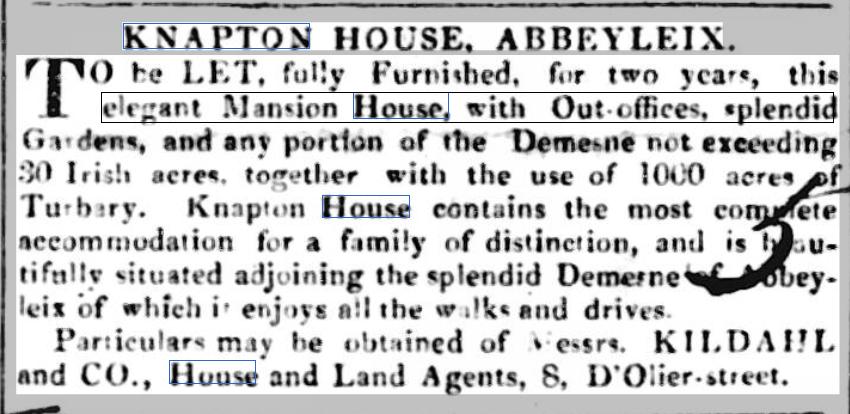
A Soup Kitchen
Through the exertions of William Brownlow, Esq , of Knapton House, assisted by K, L. Swan, Esq., and other gentlemen, a soup shop is about to be opened in Abbeyleix, and a large amount of subscriptions have been received for this truly good purpose. Kilkenny Journal, – Wednesday 30 December 1846
William Brownlow, esq. Napton, Abbeyleix 1847 Dublin Almanac
Any old parchments?
When in 1815 the Brownlow estate devolved on Charles Brownlow, afterwards Baron Lurgan, the Book of Armagh passed (with other MSS.?) to a younger brother, the Rev. Francis Brownlow of Knapton, as residuary legatee and then to his son William
In 1853 William sold the ninth-century manuscript to the Rev William Reeves charging the large sum of £300 which Reeves paid from his own limited resources, to prevent the manuscript being sold to a private collector or going abroad. Archbishop Beresford subsequently reimbursed him and presented it to the library of TCD.March 15, 1873 at Knapton, Queen’s County, Charlotte, wife of William Brownlow, Esq., and daughter of the late William and Lady Charlotte Browne died.
In 1874 William Brownlow moved into Martin’s Hotel, Baggot Street.

In 1875 Charles Colley Palmer,(1845-192) JP, DL of Rahan, Co Kildare was in residence – His brother Hamilton Palmer was renting Farmleigh.
Journal of the Royal Society of Antiquaries of Ireland 1875 Palmer, CC JP DL
Hamilton Palmer selling up estate of Mrs Palmer (Elizabeth Emily Anne Nugent) who died at Knapton 19 July 1897.
War games
In August 1899 11,00 soldiers took part in army manoeuvres at Abbeyleix, part of the Boer War training. Field-Marshal Lord Roberts arrived at Abbeyleix Station by the 11.30 train on Tuesday. and at once proceeded to headquarters at Knapton House. where, with others of his staff, he will reside throughout the struggle. Kilkenny Moderator – Saturday 12 August 1899
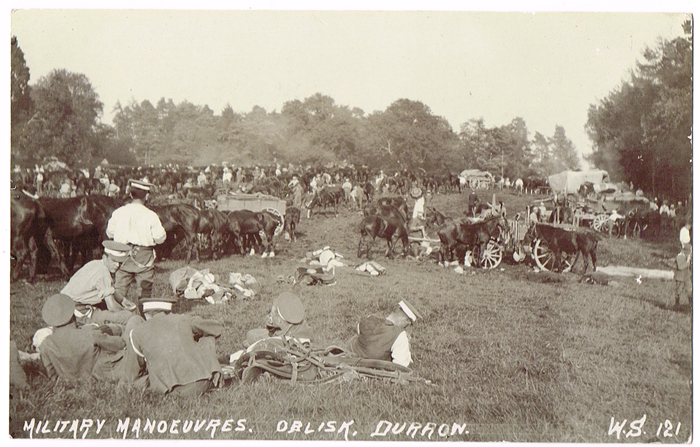
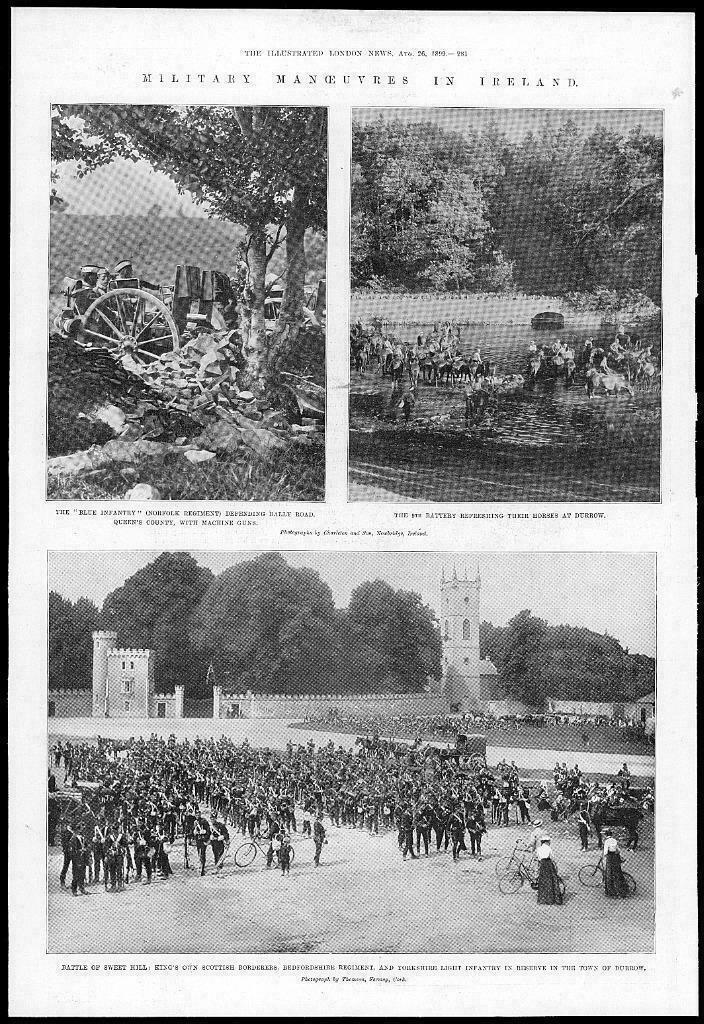
A Renaissance RM
In 1906 Murray Hornibrook RM (1873-1949), arrived. Botanist, art collector, tennis player and private secretary to George Wyndham the Attorney General of Ireland, he seems to have been something of a renaissance man.
He was the son of William Hornibrook of Kinsale (1827-1904) and Rosina Jane Murray (1843-1889) He was born in Hampstead, London on 10 Jul 1873 and died at Villa Louis Ondre, Etretat, France on 9 Sep 1949. He had 7 siblings and one half-brother from his father’s 1st marriage to Anne Smyth (1831-1860).
He was awarded the Royal Humane Society Medal 15 November 1900, for saving the life of Miss Christy at Kilkee, County Clare, Ireland. On 7/3/1906 Murray Hornibrook was married at the Chapel Royal, Dublin Castle to Gladys Thornley Thomson (1888 to 1965) only daughter of Sir William Thomson, M. D., M. Ch., LRCSI., Hon. Surgeon to H.M. the King in Ireland. Gladys’ mother was Margaret Dalrymple Stoker, Bram Stoker’s first cousin.
Princess Margaret of Connaught, Crown Princess of Sweden and granddaughter of Queen Victoria sent congratulations on Gladys’s engagement:
“The best thing I can wish you is to be as perfectly happy as I am…”
“I am sending you a tea set of Swedish china which I hope you will like & often use, it will be sent off soon, & I hope will arrive before the wedding, but parcels take such ages from here I don’t feel very sure.
With again my very best wishes,
Believe me
Yours sincerely,
Margaret

In 1905 he was still living in London and in 1906 he is shown at Knapton. In 1926 and 1928 he is living at Ryde House, Guildford, Surrey.
He was well known for his collection of dwarf conifers at Knapton. His book ‘Dwarf and Slow-growing Conifers’ (1923), revised and enlarged in 1939, records about 500 forms, and became and remains the standard reference work.
He left Ireland in 1922 and donated the bulk of his plants at Knapton House to Botanic Gardens at Glasnevin. His departure was probably hasted by the fact that his cousin Henry Hornibrook of Kinsale, Henry’s son Samuel and his nephew Herbert Woods were abducted by the IRA in Cork in 1922, Their bodies have never been found. In the Irish Times Wed, Jun 2, 1999, Kevin Myers wondered what happened to their killers? Did they go on to high office in Ireland? Did they found well-revered political dynasties? Myers goes on to discuss his interviews with late 20th century provos wo would seek absolution from certain priests for bombings and shootings knowing that an Our Father or Hail Mary would be the maximum penance, but reserve their sexual peccadilloes for priests, who might frown on murder but had no problem with lust and fornication.
Waltzing O’Donohue
By 1936 it was the home of John O’Donoghue, an all-Ireland waltzing champion, who was fined 2/6d for an unspecified transgression in July 1936.
Heartiest congratulations are extended to Mr. John O’Donoghue, Knapton House, Abbeyleix, and Miss Ciss Bannon, Pallas House, Portlaoighise, on having achieved 1st prize in the All-Ireland Old Time Waltzing Competition organised by the Irish Labour Party. The competition, which was the final of numerous eliminating contests, was held in the Four Provinces Ballroom, Dublin, on Easter Sunday night and attracted entries from practically every county in Ireland. In winning the much coveted trophies (two large silver cups and 25 guineas), Mr. O’Donoghue and his partner, “have proved what many of their friends have known them to be —first-rate dancers. Leinster Leader – Saturday 19 April 1947
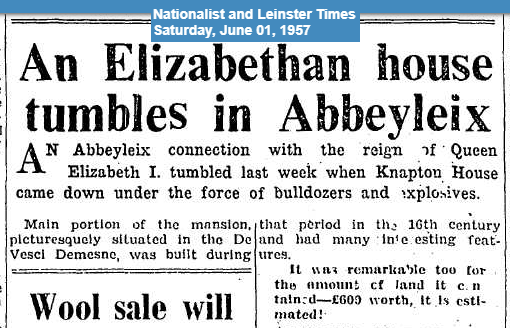
When the main house was demolished in May 1957, the range of stable buildings at the rear, including the old carriage house, was retained, re-roofed and used as farm buildings.

The latter lost its roof in a severe accidental fire around 1962, after which the historic buildings, and the adjoining walled garden, were neglected. In 2020 the present Viscount de Vesci was considering redeveloping the existing buildings including the Old Carriage House into tourist and holiday accommodation.
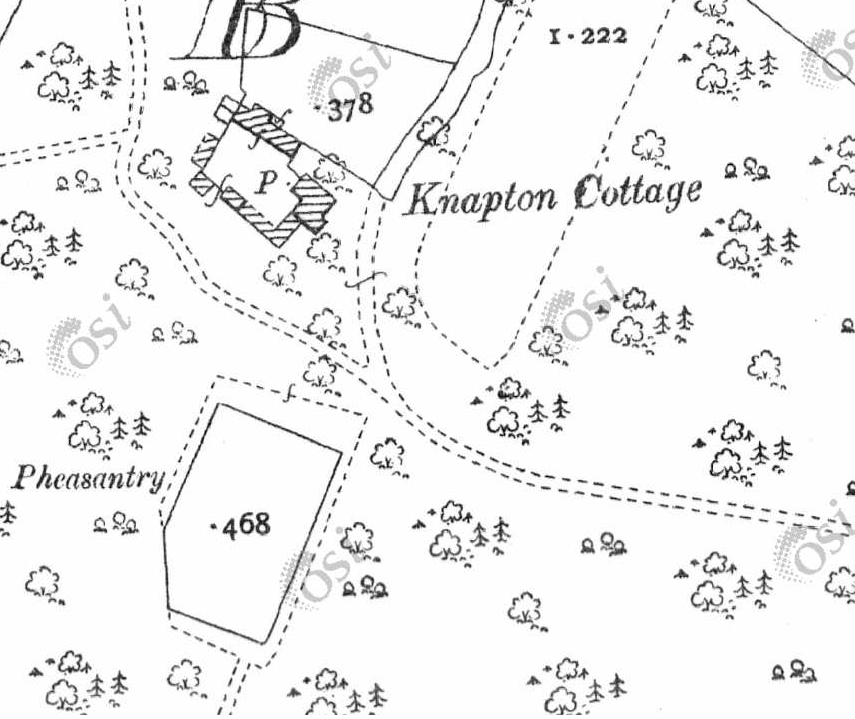
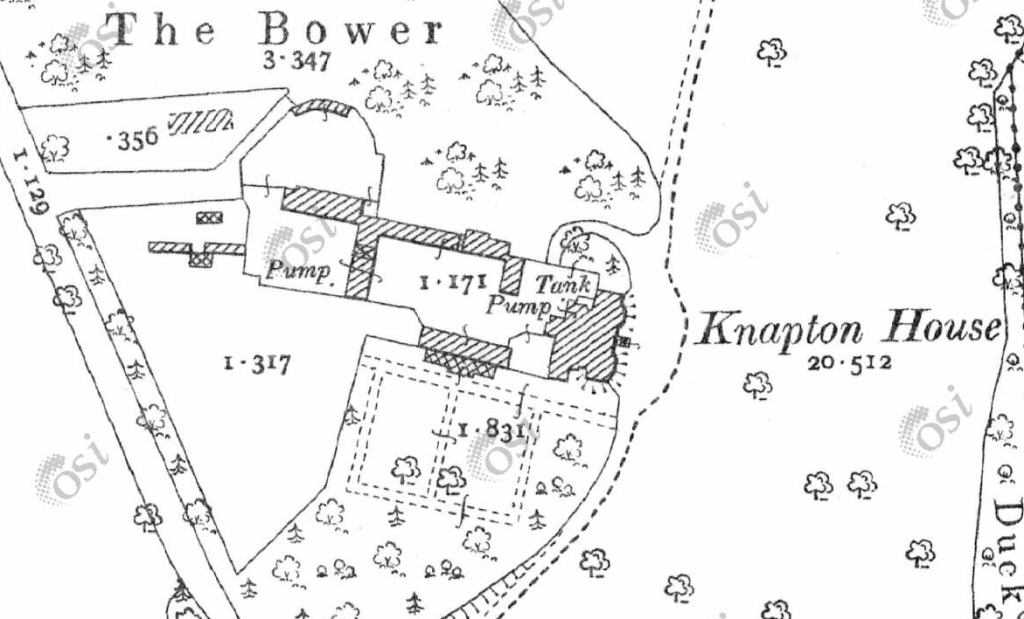
Wonderful stuff, thank you. On the very brink of looking at some of the local history of Laois, these articles are gold dust.
LikeLiked by 1 person